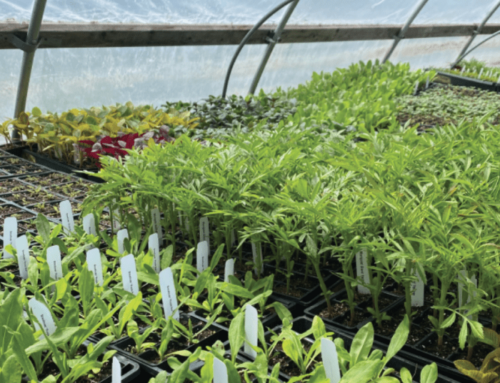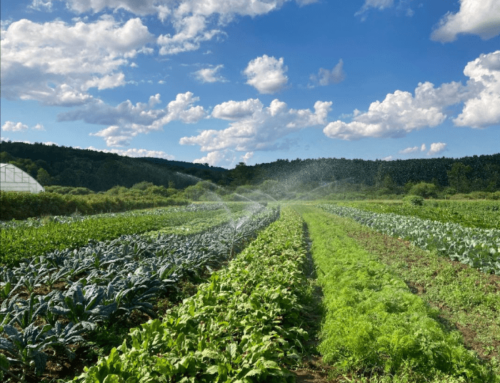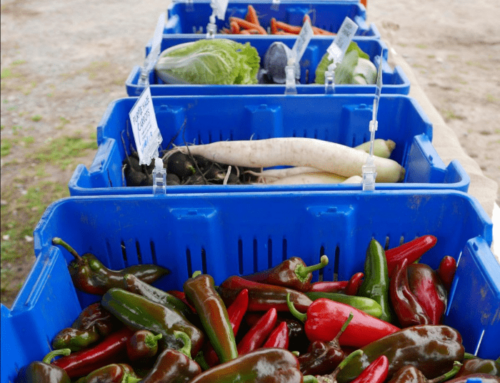By Richard Robinson, Farmer at Hopestill Farm

If you had looked for my onion patch a few years back, it would have been hard to find at this time of year—overgrown with endless amounts of pigweed, crabgrass, and all manner of other weeds, lording over and crowding out my onions. Last year I radically changed my approach to onions, and this year extended that approach to most of my gardens. This year, just before harvest, you can see every onion flopped over in the row, and the weeds in a 100-foot bed number in the low dozens.
I did three main things to effect this transformation, all designed to deeply bury my prodigious bank of weed seeds. First, I stopped tilling the garden. Second, I laid several inches of new compost on each bed. Third, I mulched everything deeply with leaves, covering beds and paths alike, only pulling the leaves off the beds at planting time.
Like many gardeners, I had been waging a perennial battle against weeds for many years. “Let no weed go to seed” is a great slogan and a worthy goal, but when you are tilling up fresh seed every year, it requires a level of constant vigilance that this gardener had trouble mustering, especially as the summer progressed and the weeds grew bigger and faster. And August is the worst—all my valiant efforts in early summer would come to naught if I slacked off in August, but with heavy harvesting chores and hot, humid weather, I never kept up. The weeds always won.
I once asked a bunch of market gardeners what percent of their time they spent weeding, and whether they felt they had them under control. The answers ranged from 5% to 50%, and from no to no.
No-till and deep mulching, along with all its other benefits, including carbon sequestration, offers a way to get way ahead of the weeds. Based on my experience over the past two years, I would recommend it to anyone who gardens, on any scale. There is still work—I figure it takes about an hour to wheelbarrow on the compost and leaves for a 100-foot bed. But that’s no more work than weeding that same bed would be otherwise, and the soil is significantly improved, and the work can be done in November and December, rather than during the summer.

These onion beds have not been weeded all season, yet there are almost no weeds to be seen at harvest time.
There are a couple of caveats, things to be aware of and plan ahead for, when you adopt this style of gardening. First is nitrogen—the heavy leaf mulch does wonders for soil structure, but it does use up a lot of nitrogen as it slowly breaks down. I found that some crops just never took off, despite all the compost. They wanted more nitrogen, and so I have learned to supply it, with a bit of blood meal and more feather meal. Second is slugs—they are the bane of deep mulching. I think it’s a good idea to pull the mulch way back from transplants or newly emerging seeds, to reduce the slug predation on the young growth. You can scoot it back after the plants get a bit bigger.





